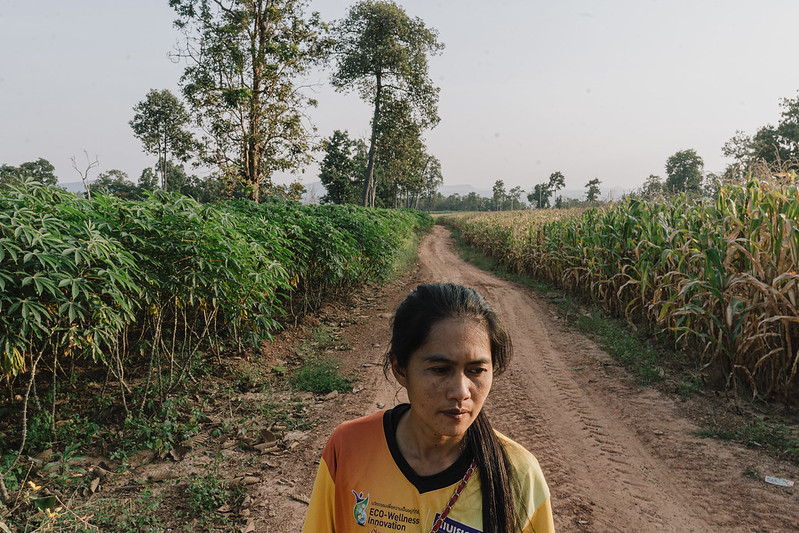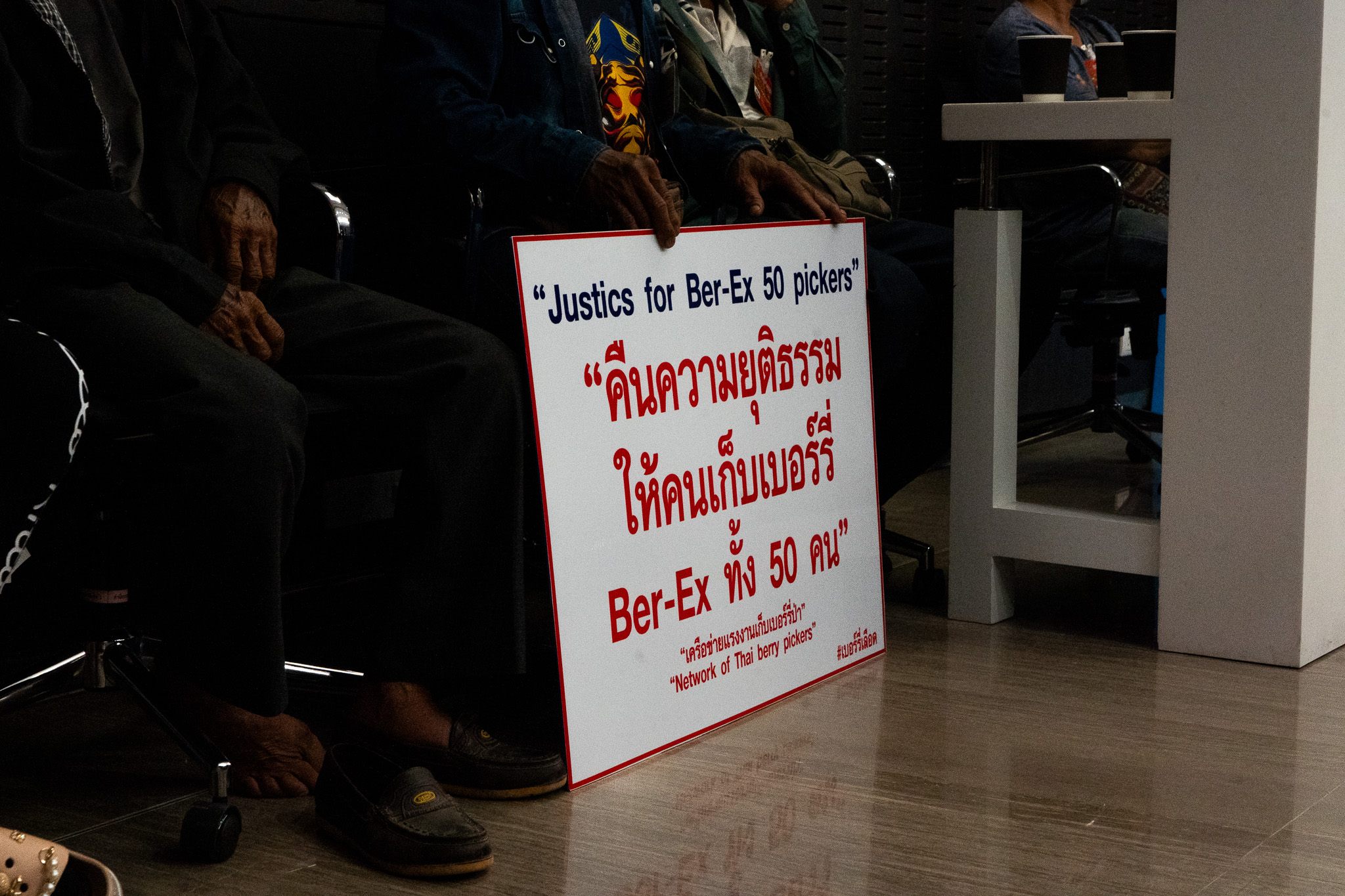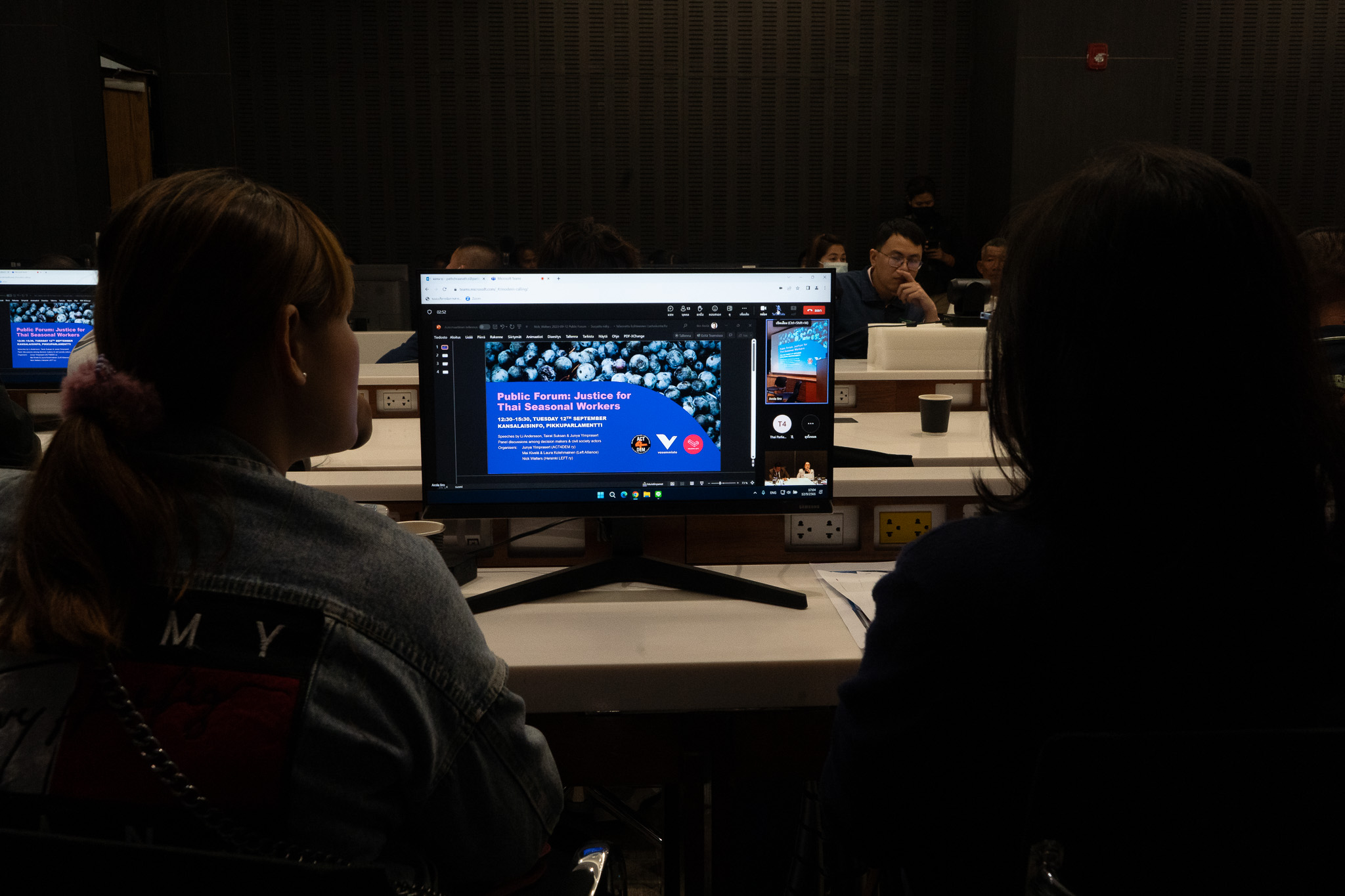This is Part 3 in a series telling the stories of the Ban Beung E Tao and Ban Tha Kae communities that have been affected by flooding in Isaan this year. This piece includes an update on the flooding in both villages, the economic challenges they face, and how they would like the government to prepare for future floods.
Read “Part 1: Rising waters to submerge Chi River Basin communities”
Read “Part 2: Flooded communities struggle with insufficient aid”
Guest contributors Amy Bell and Kaitlyn Greaney report from Nam Phong District in Khon Kaen Province

12 November – The Nam Phong River from above. Even after one month since the flood was declared, the waters did not completely recede. Photo credit: Kyler Carlson
The waters began receding during the first week of November, exactly when the dam officials told the villagers that it would. The Ban Beung E Tao and Ban Tha Kae communities were under water for 20 days. Injuries and infrastructure damage was minimal but the damage to residents’ farming land was devastating. Over 200 farmers of the 400 residents have filed for compensation with the government.
“Everything’s the same, but the flood left a trail of sadness and worry,” says Sangkom Panikom, a community leader of the two villages. “Some will paint their houses. Some will move to higher ground. It’s like a lesson. We learn from the pain and sorrow and must prepare for it to happen all over again.”
Most farmers were unable to harvest any of their crops. Many farmers have traveled to areas that were not affected by the flood so that they can earn an income harvesting crops. Other farmers who are too elderly to work as laborers must wait for the off season in January to begin planting rice again.

21 November – “My job now is borrowing money from friends,” says Pao Sankhod, a resident of Ban Tha Kae. Photo credit: Amy Bell
The floods have taken a large toll on food supplies and the local economy. Since farmers were unable to harvest their rice fields this season,their stored rice supplies for the families to eat, are quickly running out. Many did have any agricultural income since the last off-season harvest that ended in April.
“We are running out of food because we don’t have our rice,” says Sermsee Gaewkamsaen, a resident of Ban Tha Gae. “We only have only received donations twice since the water went down. There is very little help. The donations might last one more week. But my field is still flooded so I cannot harvest. I can’t replant, I can’t do anything. I get my money from rice and now I can’t get money.”

7 November – “I think it will take a long time to get compensation,” says Ban Tha Kae resident Sermsee Gaewkamsaen. “Maybe after the New Year. Now none of us have an income.” Photo credit: Alena Limthongviratn
Threats to risky investments
Farmers are eagerly awaiting the compensation that has been promised by the Ministry of Agriculture. They hope that it arrives in time before the off-season begins in January.
In the 2011 floods, the compensation processing took two months after the floods receded. Some villagers predict they will receive the compensation sometime after the New Year.
“I don’t know the schedule of the government,” says Sangkom. “They’ve done a survey, but I’m not sure when the money [compensation] will come.”
The delay of this compensation is especially troublesome because a majority of the farmers are sitting on top of loans. Farmers borrow a large sum of loans in the beginning of the farming season to cover all of their expenses that they are unable to pay for.
In Ban Beung E Tao and Ban Tha Kae, farmers start out with a 10% interest rate each month on agricultural loans. But if payments are late, that rate can slide as high as 14% a month, said Udom Duangsuwan, a resident of Ban Tha Kae.
For flooding situations, there have been some examples of forgiveness from the banks. This time, it has been predicted that the government will extend the due date by three months.
But this hardly alleviates their debt considering their next source of income is following the harvest in the next off-season in April. The farmers in Ban Beung E Tao and Ban Tha Kae are caught in a vicious cycle of risky investments and adjustable loans.
One reason for this is their vulnerability to flooding due to their proximity to the Nam Phong River. The water released from the Ubol Ratana Dam into the Nam Phong is a constant threat to the farmers’ livelihood in these communities.
The risk of farming is increased by inadequate compensation. The Ministry of Agriculture has promised 1,250 baht per rai, but most villagers agree that this won’t cover their lost investments.
“A compensation between 3,000 to 5,000 baht per rai would be fair,” says Pao Sankhod, a Ban Tha Kae resident. Several other farmers expressed similar sentiments. The compensation does not cover the economic damages of the flooding, and the farmers are left with having to cover a majority of the burden.

20 November – “If compensation is too low, I will have to take out another loan,” says Ban Tha Kae resident Pitsamai Thammada. “Loaning is really critical for us. The loans pile up. We expect the government to raise the price of rice in the future, but the government has not made any promises.” Photo credit: Amy Bell
The fluctuations of rice prices also adds to the uncertainty of a farmer’s income. “We don’t sell our rice right away. We stock up at home and wait for a good price,” says Ban Tha Kae resident Pitsamai Thammada. “Whenever I need money, I have to sell the rice. And whenever there is a good price, I have no rice left to sell.”
Under past governments, the price of rice has been regulated, adding stability to the lives of farmers. But that is no longer the case.
“I can’t predict the flooding and the price of rice, so I’m scared for my business investments. I dream for the day where the price of rice is 10 baht per kilogram,” states Khamben Polmore, a Ban Tha Kae resident. “I want the prime minister to know this information,”
The combination of poor water management, inadequate compensation, and unstable rice prices all cause the economic disadvantage that the farmers in Ban Beung E Tao and Ban Tha Kae face. As the water dries up, so too do the farmers’ hopes for the local economy.
Call for better water management
Community members say the best place to start improving their situation is by fixing water management of the Ubol Ratana Dam.

21 November – Udom Duangsuwan, of Ban Tha Kae resident, lost 48 rai of rice to this year’s flood. Photo credit: Amy Bell
“I want the provincial government to identify and have a clearer water management,” says Udom.
Improving water management is a much more sustainable solution than increasing the compensation for the hundreds of farmers affected by flooding surrounding the Nam Phong River.
“The dam provides water to the farmers, but it also damages the rice fields with floods. The flooding is due to heavy rains and poor dam management,” says Khamben. “I wonder why there is no water when we need it. I wonder why there are such severe floods. If the water management stays the same, then we will have the same flood.”
Many questions remain unanswered for community members, but for now, all they can do is wait for compensation, for the next farming season, for water management improvements – all while returning to their daily lives, devastated by their losses.
Amy Bell studies Economics and Public Health at Occidental College. Kaitlyn Greaney studies Speace, Language, and Hearing Sciences at University of Colorado-Boulder. Both are studying Public Health in Khon Kaen this semester.
If you would like the community’s repair efforts, you can donate here.





